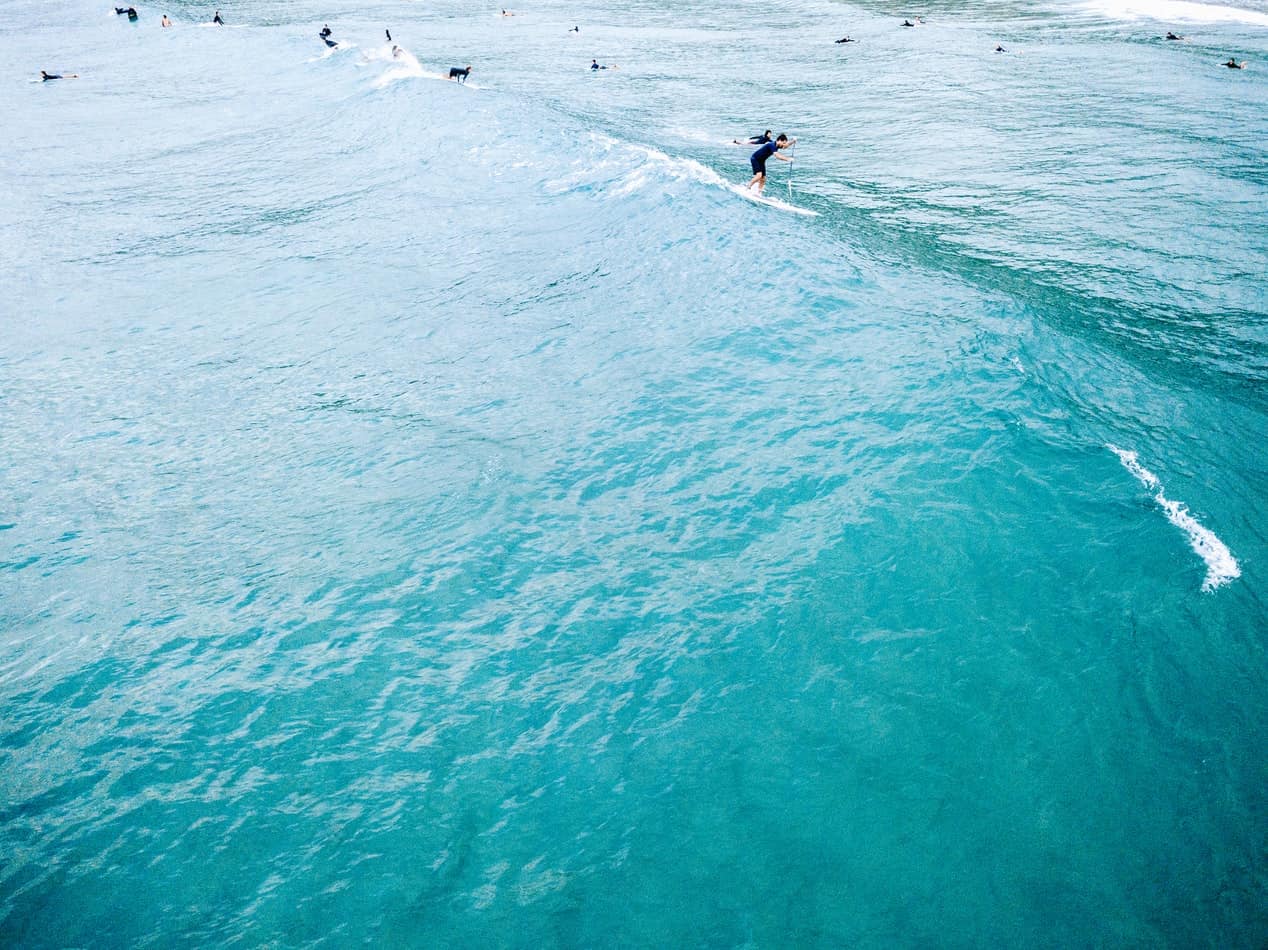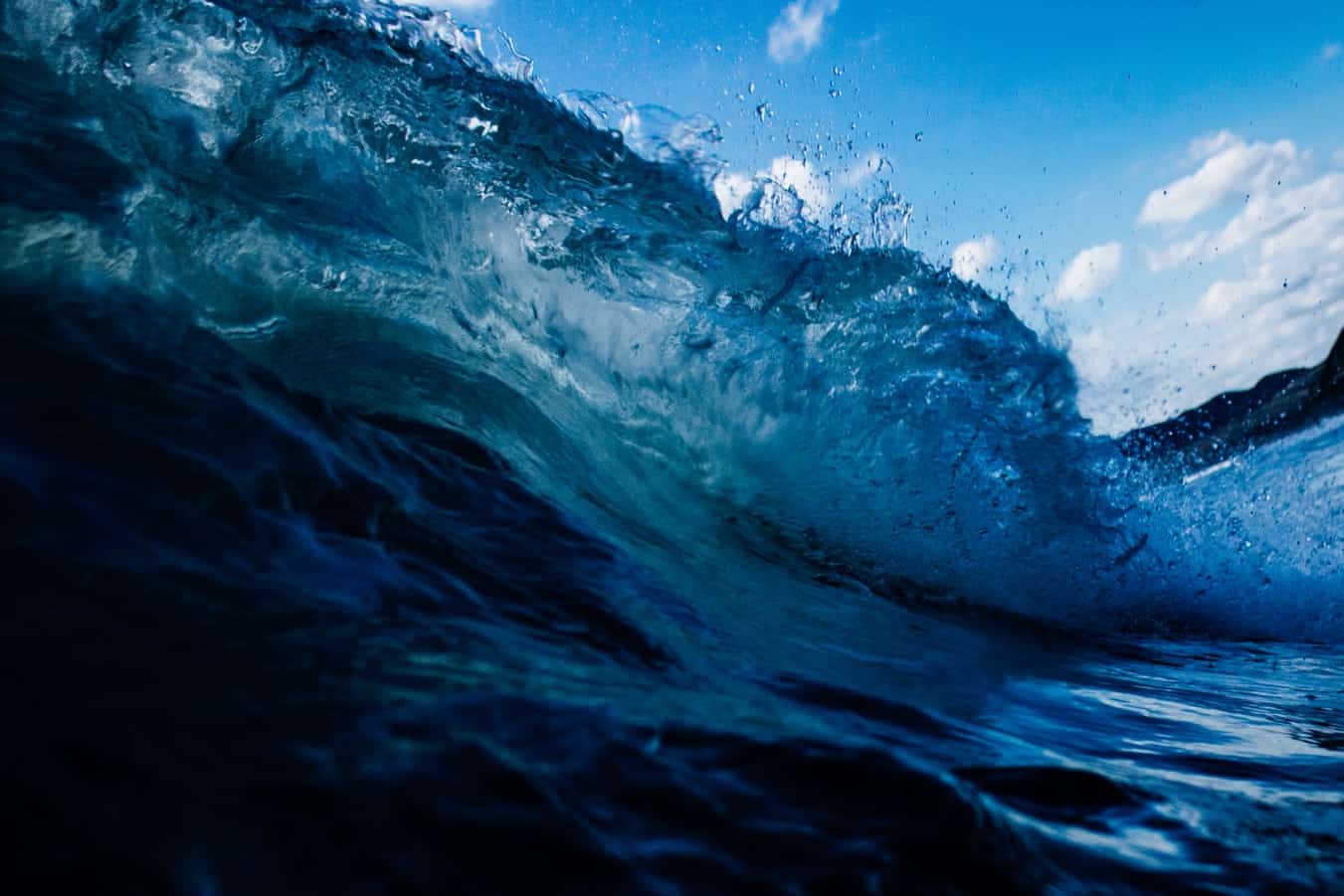Surfing is one of those rare sports that doesn’t take place on land. Unlike America’s Cup boating race where you are on a sea craft and rarely come into contact with water, surfers have a far more intimate relationship with water. In my 20 years of surfing and teaching, I feel I understand the sea far better than I did when I started. The ocean is incredible, mysterious and challenging. Every day I go out to surf now I don’t know what I will face, and I am often thankful I’ve made it home in one piece.
Is surfing dangerous? Surfing is dangerous because surfers cannot control the ocean. Here I’m going to talk about the ocean and the dangers of surfing outlined.
What Are The Biggest Dangers Surfers Face?
The ocean is unpredictable. If you think of it as a living entity, it might help you to understand its behavior better. Surfers are faced with dangers when they paddle out to waves and when they ride a wave. There are also dangers related to the currents of the ocean and the time of year that one surfs.
Rip Currents (Riptides)
Think of the ocean waters as layered. There is the visible surface of the water and a layer underneath. Often these two layers work in opposition to each other. The surface can move in one direction while underneath, it moves differently.
Rip currents are long bands of current that move very fast. They are different in size, and some are in a straight line while other riptides are curved or semicircular.
Rip currents move out to sea while the top surface layer moves towards the shoreline. Rip currents are dangerous because of their power and speed and their ability to pull surfers far from the beach.
There have been many instances where surfers had to be rescued by lifeguards who either swam out to sea or come out by boat and brought them in.
Swim in a parallel motion to the shore
Risk Of Drowning
There are several ways surfers can drown in the water. I have known experienced surfers who have ridden waves, then fall beneath the surf and never to come up again. Drowning is a real danger so surfers must always be careful.
- Hold Down:
It happens a lot that two waves and even three come in succession. If a surfer finds himself or herself on the first rolling wave, he needs to prepare for the next two coming down right on him. It is not very common for experienced surfers to drown in a hold-down episode because they know what to do to get back up to the surface. But in a 3 wave hold down, surfers can expect to be thrown about under the water for over 10 seconds.
Stay calm until you are reoriented
- Going Unconscious
One of the most dangerous places to surf is near a reef or where there are rocks. 90% of surfers who die do it by drowning. Drowning has occurred when a surfer rides a wave then is hurled against a rock, hitting his head and going unconscious.
On more rare occasions a surfer is in a hold-down, starts to panic and becomes disoriented and can’t tell which direction to go to get back to the surface. This has happened to me and I can tell you it is a frightening experience. After almost 10 seconds, I was able to find the ocean floor and push up to the top.
Sea Creatures
We all imagine surfers getting body parts chewed off by sharks that come near the shore to feed. There have been reported incidents of shark bites, but they are much less common than the dangers other sea creatures present.
The real danger is jellyfish. These sea creatures move in packs and there can be hundreds or even thousands of them that suddenly appear, depending on the season.
It’s a good idea to check with the lifeguard station before venturing out in the ocean to find out how many stings have been reported to them.
The Ocean Floor
There’s nothing worse than being thrown down by a big wave and your feet scrape against sharp rocks in the sea bed, or you hit your head on the floor and it’s hard as concrete.
If you scrape against a reef you can get cuts that turn into infections. Make sure to treat deep cuts seriously and clean them out thoroughly at home with hydrogen peroxide and bacitracin ointment. If an infection occurs, call your doctor to get an antibiotic.

Cliffs, Rocks, Piers, Reefs, and Jetties
All of the above land formations can put a surfer in grave danger and can be fatal if your head comes into contact with hard land masses. When you ride a wave, you have no control over the direction it will take you. Nature is giving you a ride, but it doesn’t tell you when or where the ride will end.
There are boulders submerged under the surface that you can’t see. Don’t surf near cliffs unless you are either experienced or a professional because it’s a safety nightmare. The cliff face is a wall and there is no way to get out of the water. Be careful and tread along the cliff until you find an exit. If there isn’t one nearby, stay calm and orient yourself to your surroundings until you can locate the exit area.
Jetties are like fingers spreading tentacles into the ocean. If you wipe out near a jetty you can hit your head or break bones in your body. It is strongly advised never to surf near jetties. If you see others doing it, don’t copy them. Just because there are other surfers in the area doesn’t mean it’s safe.
Others Surfing
If it’s a perfect day for surfing you may notice a lot of surfers out in the ocean. These other surfers present a hazard. Just like you, they have no control of their bodies or their surfboards if they wipe out.
If you notice a lot of breaks then there will be surfers riding them. A lot of surfers don’t follow surfing etiquette and will cut you off on a break and take the wave. This behavior is not only selfish, but it’s also very dangerous, putting both you and him in danger.
Maintain a safe distance from other surfers and don’t count on them doing the right thing. On a good day, there’s enough wave activity for everyone to catch one and ride. Have patience and obey surfing etiquette even if others don’t.
Your Swimming Ability
Poor swimming ability is what causes a lot of surfing accidents and makes surfing more dangerous. I was fortunate to have an in-ground pool in the backyard growing up. By the time I was ten I was swimming like a fish in the water and I knew how to swim out of rip currents by the time I was 12.
Anyone can learn to swim well, and the best place to learn is in a pool. Find a gym that has a pool; they’re usually about 75 feet in length and swimming will get you accustomed to water’s nature, how it responds to you, and the control you can exert over it.
Don’t rely on your surfboard when you are losing control in the water. Tread the surface of the water until you have your bearings and retrieve your surfboard later. Remember, at
If you are not confident in your swimming ability, buy a life jacket or a life vest. They cost under $50.00 and you will be much safer surfing while wearing a life jacket.
Weather Conditions
The morning you surf can start warm, the sky full of bright sunshine. Within minutes, the weather changes dramatically and you see lighting strikes suddenly and the lifeguard is whistling frantically for everyone to get out of the water.
Lighting strikes in the water are real and dangerous. Water is a powerful conductor of electricity and it happens often that surfers are electrocuted in the water.
Get out of the water when you hear the lifeguard’s whistle. Often these storms pass quickly and in a while, you can get back in the water and surf safely.
Related Questions
How Do I Swim Out Of A Rip Current?
Rip currents move in the opposite direction of the surface of the water. When you get caught in a rip current, you’re pulled out to sea.
The first thing to do is to stay calm. It is even difficult for experienced swimmers to swim against the current to the shore. This method doesn’t always work, and you expend a lot of energy trying to do it.
To get back to the shore, swim parallel to the shore. Go first in one direction and swim for about 50 feet, moving slightly towards the shore. Then, swim in the opposite direction parallel to the beach, turning in a little more.
As you swim you will discover the edge of the rip current. Swim past it and then swim straight to the shoreline.
What’s the Best Way To Avoid Bites From Sea Urchins And Jellyfish?
The best way is to wear a full body wetsuit. If the lifeguard station tells you there are a lot of jellyfish prowling the water near the shore and you still want to surf, you’ll need to wear gloves and booties in addition to your wetsuit.
What Is The Best Way To Prevent Wipeouts?
You can take a few preventative measures to avoid wipeouts. One way to lessen the chance of wiping out is to wax your surfboard and apply extra grip to the sides. A surfboard that’s waxed will help you stay on it longer. Bad waxes are often the reasons why we wipe out.
Pop up as soon as possible because it’s easier to control the surfboard when you’re up and standing on the board. When I pushed up faster I wiped out much less.

